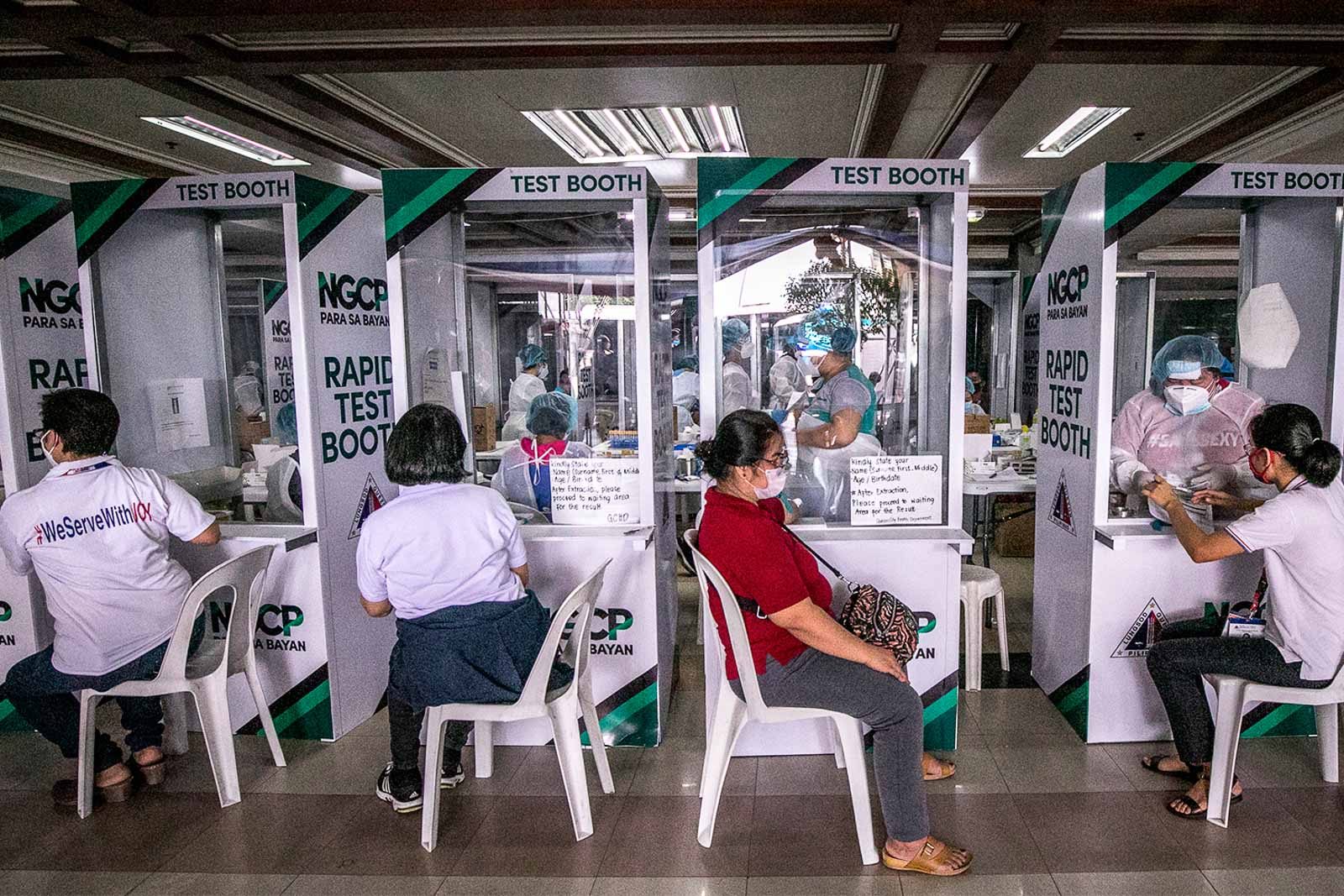SUMMARY
This is AI generated summarization, which may have errors. For context, always refer to the full article.

MANILA, Philippines (UPDATED) – The number of coronavirus cases in the country rose further to 46,333, as the Department of Health reported 2,099 new cases of the disease on Monday, July 6.
The newly-reported cases include 1,258 fresh cases – or test results released to patients in the last 3 days – and 841 late cases, which refer to results released to patients 4 or more days ago.
The death toll increased slightly to 1,303, following 6 new fatalities. There were also 243 new recoveries reported, bringing the total number of recoveries so far to 12,185.
The DOH said most of the new cases were found in Metro Manila (1,482), followed by Central Visayas (1,188), Calabarzon (223), Central Luzon (42), Western Visayas (41), and Northern Mindanao (36).
DOH Undersecretary Maria Rosario Vergeire said Metro Manila and neighboring regions also showed a notable increase as cases have been rising in the past two weeks. Meanwhile, the DOH noted cases in Western Visayas seemed to be decreasing, but that this still needs to be sustained.
Vergiere gave a frank assessment highlighting the rise in cases and emphasized the need to continue practicing health protocols.
“Ang tanong po: Dapat po ba natin itong ikabahala? Ang sagot po namin, oo, dahil nakikita po namin na tumataas uli ang bilang ng mga kaso. Ngunit ibig sabihin po ba nito wala na tayong magagawa? Hindi po…. Mayroon na tayong established protocols na dapat sundin upang makaiwas tayo sa virus,” Vergeire said.
“Ang minimum health standards ang tutulong sa atin sa panahon ng pandemyang ito,” she added.
(The question is: Should we be worried? The answer is yes, because we are seeing that cases are increasing. But does this mean there is nothing we can do? No…. We have established protocols that should be followed to prevent the spread of the virus. Our minimum health standard will help us during this time of the pandemic.)
Virus spreading
Just the day before on Sunday, July 5, the DOH reported its worst day of newly-reported cases since the start of the outbreak. This was after more than 2,000 new cases pushed the number of confirmed cases past 44,000.
While it has worked for over a month now to clear a backlog of unvalidated tests, health officials also attributed the rise in cases to increased contact among the population as community quarantine restrictions were eased throughout the country.
Vergeire said the country’s health system capacity is still able to cope with the recent increase as critical care utilization rate was at 40.6% as of July 2.
Looking at other critical factors in evaluating the status of the outbreak, the DOH said the case doubling rate in Metro Manila, where cases remained concentrated, was at 8.32 days, slightly higher than the standard of 7 days.
The critical care utilization rate in Metro Manila, 63.41%, was higher than the nationwide average – a level characterized as “moderate risk,” Vergeire said. While this was the case, Vergeire said there was no shortage for now as not all hospitals in the capital region have expanded their allocation of beds and facilities for COVID-19 patients to the mandated 30%.
Vergeire says this is where the country is at when looking at key figures in measuring the status of the outbreak: @rapplerdotcom pic.twitter.com/2BiJ9w9P3K
Meanwhile, on reports that at least 200 scientists have urged the World Health Organization to reconsider its recommendations after evidence showed the coronavirus was airborne, Vergeire said data was not yet definitive.
“We already assume this is airborne when doing aerosol generating procedures in hospitals. As for outside the hospital, it is possible but the data is not definitive,” she said.
Despite this, Vergeire added: “The implication for the general public is to wear masks at all times, which we are already recommending, while for healthcare workers, it won’t change much since we already wear n95s when seeing patients.”
The DOH has stressed that as cases continue to increase, it was essential the public continued to follow health standards like frequent hand washing, staying home, and practicing physical distancing when out in public spaces. (READ: As coronavirus cases rise, DOH reiterates: Stay home, follow health protocols)
“Nung nag-ease tayo ng quarantine ito yung ating (When we eased quarantine, this was our) specific condition. We will ease this quarantine but minimum health standards should be implemented and should be followed and practiced by every individual,” Vergeire said. – Rappler.com
Add a comment
How does this make you feel?
There are no comments yet. Add your comment to start the conversation.